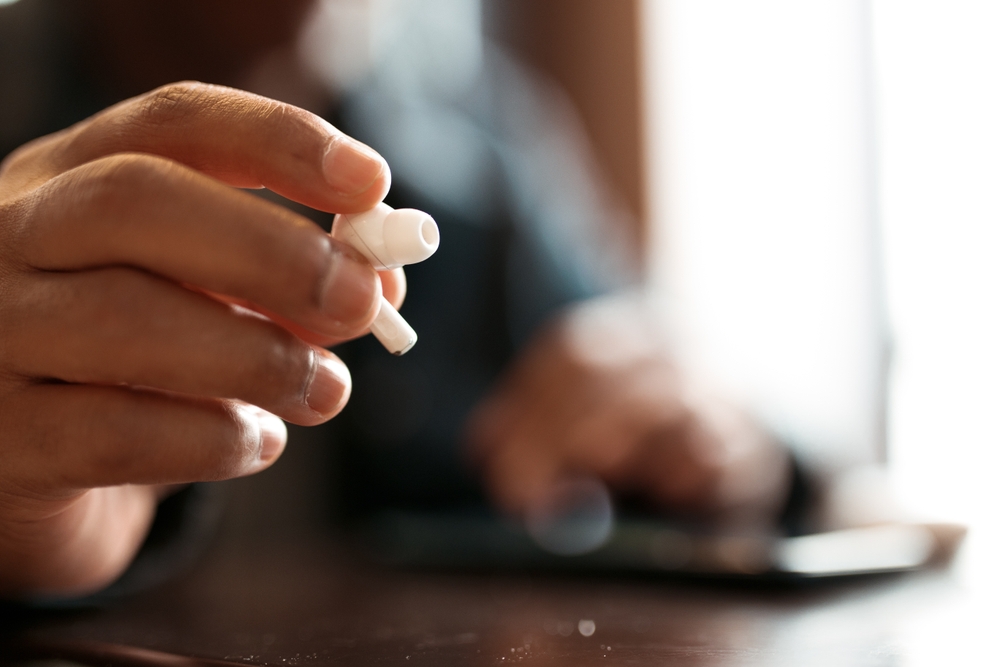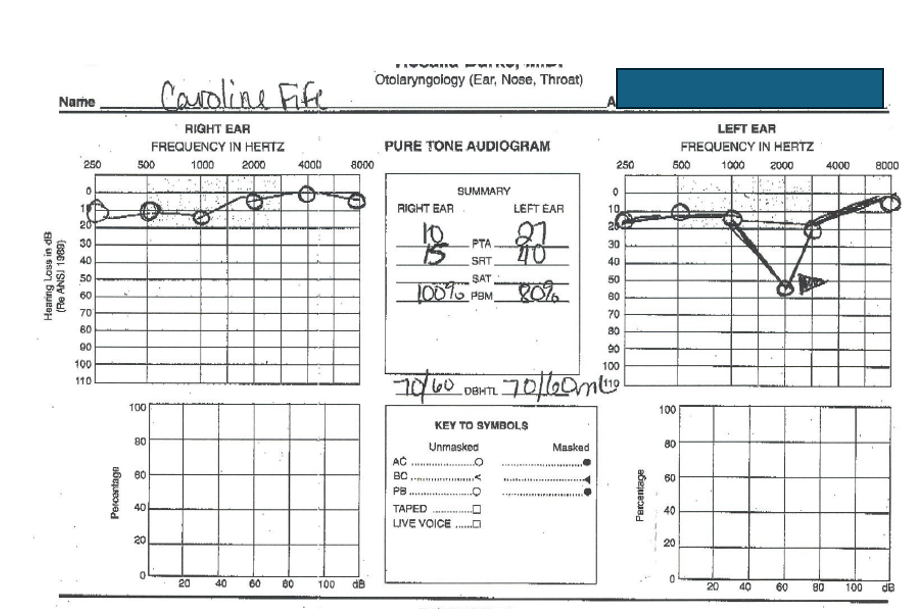An ENT clinic nearby was willing to stay open late and that’s when I got the hearing test below. The short story is that my hearing came back with high dose steroids (and for a week, I got a LOT of extra work done since I could not sleep on high dose prednisone). That audiogram looks very quaint and old-fashioned by today’s standards, and it may not appear to show a very severe hearing loss, but it was exactly the range of the spoken word. I didn’t get hyperbaric oxygen therapy –partly because 20 years ago, data on the benefit of HBOT was not as convincing as it is now but mostly because I didn’t want to make my entire on-call crew come in over the weekend on my account.
ISSHL is supposed to be rare, but I am not so sure. My husband had the same thing 5 years later, and I can name several friends who have had ISSHL – more people than would seem possible for a “rare” condition. These days the data on the use of HBOT is excellent, but time is of the essence in getting treatment, and it can be hard to get an audiogram quickly.
I am posting this blog because there is a very interesting solution to the problem of getting a screening audiogram. Your AirPods can do it with your smart phone!
I want to be clear that I don’t have any financial interest in this technology. I am not an ENT doctor, and I know very little about audiology. However, I do think everyone should know that they can at least get some baseline hearing data with technology they may have available at home. Here’s how to Use the Hearing Aid feature on your AirPods Pro 2.
Here’s how to take the Hearing Test:
- Ensure AirPods Pro (2nd generation) are connected to your device: (iPhone or iPad).
- Find a quiet environment: to minimize background noise interference.
- Open the Settings app on your device .
- Navigate to your AirPods settings .
- Select “Take a Hearing Test” .
- Follow the on-screen instructions .
- The test will play tones at different frequencies and volumes .
- Tap the screen when you hear a tone, even if you hear it multiple times, tapping once is sufficient.
- The test will assess your hearing in both ears .
- View your results .
- See your audiogram and recommendations .
- You can access detailed results and the audiogram in the Health app .
The treatment of ISSHL is often very delayed. While I am sure the experts in the field will warn everyone that a “do it yourself” hearing test should be interpreted with caution, it might be a useful method to figure out if there’s a potentially serious problem. (All you experts out there – feel free to message me with your comments and concerns and I will post them!).
–Caroline

Dr. Fife is a world renowned wound care physician dedicated to improving patient outcomes through quality driven care. Please visit my blog at CarolineFifeMD.com and my Youtube channel at https://www.youtube.com/c/carolinefifemd/videos
The opinions, comments, and content expressed or implied in my statements are solely my own and do not necessarily reflect the position or views of Intellicure or any of the boards on which I serve.




